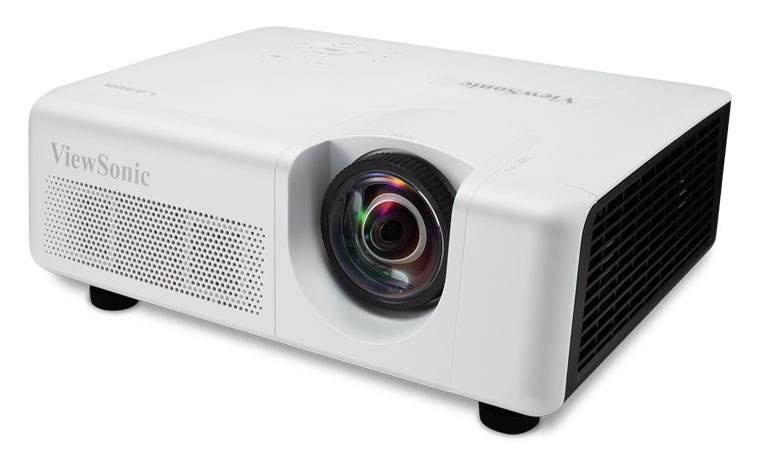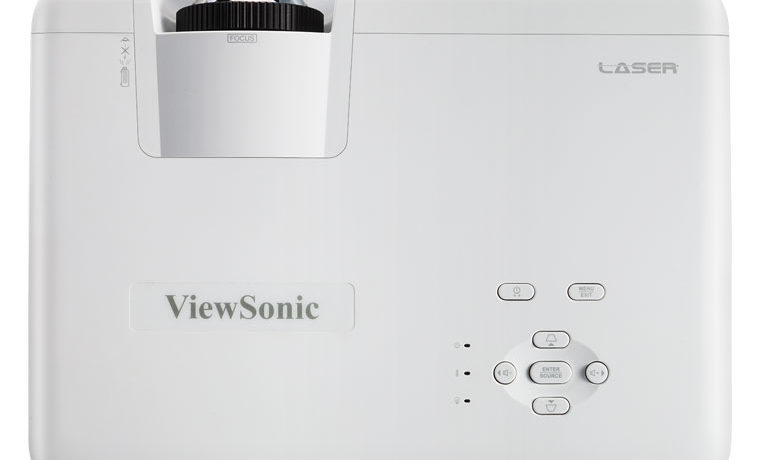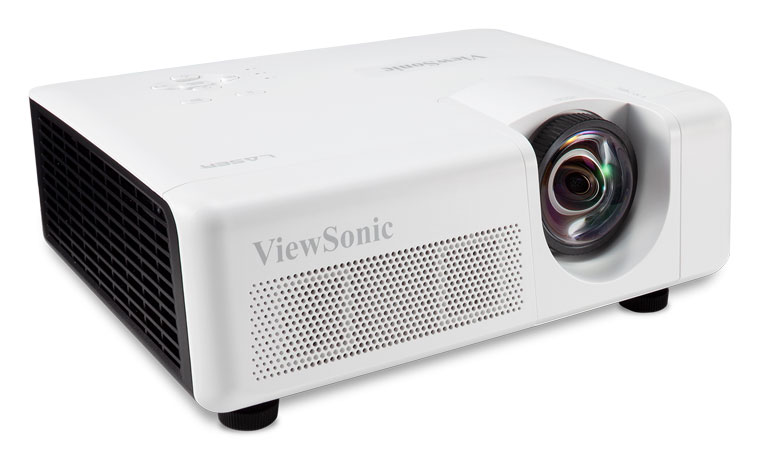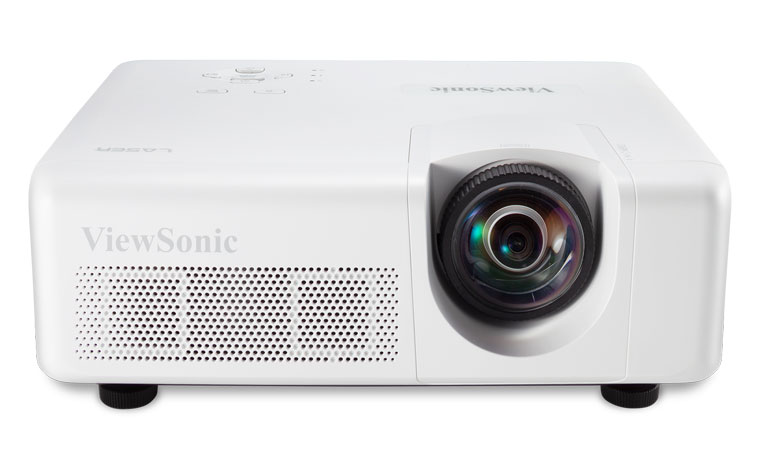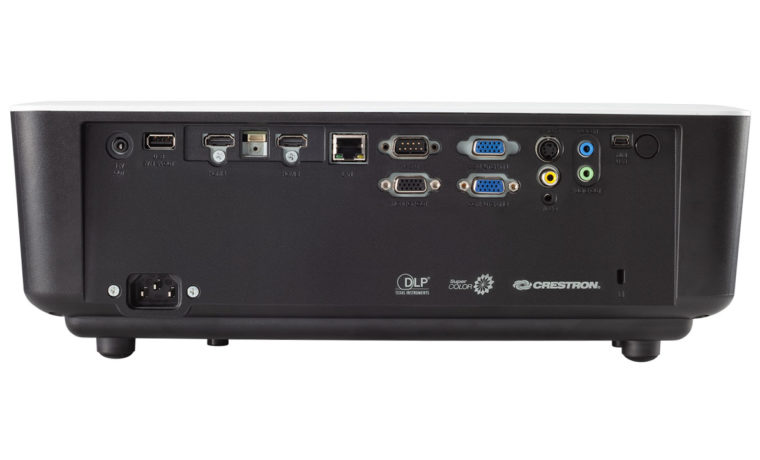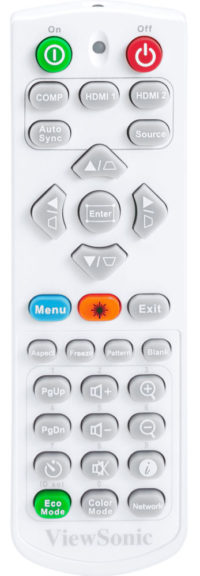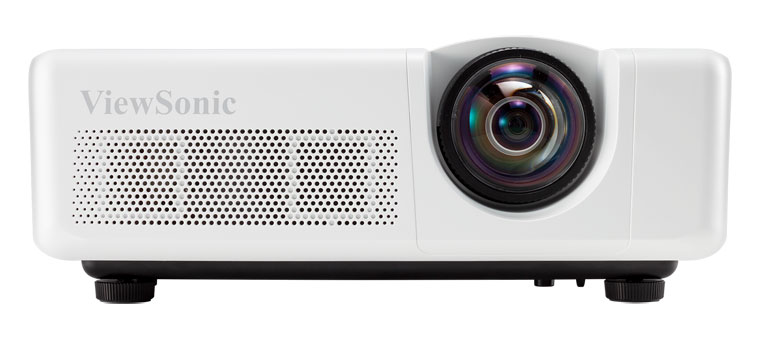The LS625W, LS625X, and LS620X are based on DLP (Digital Light Processing) imaging technology with laser/phosphor illumination. In this type of system, some of the light from an array of blue lasers excites a yellow phosphor wheel, whose yellow light combines with the rest of the blue lasers' light to produce white light.
The resulting white light then passes through a color-filter wheel with segments of different colors. Each color is directed to the DLP imaging chip in turn, which forms the image for that color and reflects it through the main lens and onto the screen. The images for each color alternate so quickly that the human eye blends them into a full-color image.
The LS625W, LS625X, and LS620X employ ViewSonic's SuperColor technology. According to the promotional literature, this includes an exclusive color-filter wheel with five, six, or seven segments, though the company would not reveal which one is used in the LS625W. (Interestingly, the LS620X review identifies its color-filter wheel as a 6-segment RYGCBW design, but when I pointed this out to the company rep, they still refused to reveal any specifics about the color-filter wheel in the LS625W.)
Thanks to its laser/phosphor light engine, the LS625W achieves a peak brightness of 3200 ANSI lumens, which is plenty bright enough to stand up to classroom lights. ViewSonic claims a staggering dynamic contrast ratio of 3,000,000:1, which is achieved by dynamically modulating the laser power. This is another part of SuperColor, along with advanced digital image processing. I strongly suspect that the actual measured contrast ratio is far less than 3,000,000:1, but dynamically modulating the laser should provide an impressive dynamic range in any case.
The laser/phosphor light engine is sealed to prevent dust and moisture from interfering with the lesson. Also, it's rated to last up to 20,000 hours, so there's no need to change lamps every year or so. All in all, the LS625W is virtually maintenance-free.
While it doesn't offer lens shift, the LS625W does provide horizontal and vertical keystone correction to square up the image on the screen if the projector can't be placed in an ideal location. This is super handy if needed, but engaging keystone correction also degrades the detail in the image, so I don't recommend using it unless there's no way to position the projector without needing it.
For classrooms without a separate sound system, the LS625W includes two built-in speakers, each powered by a 10W amp. That's pretty hefty for onboard speakers, which should be plenty audible to all the students in a typical primary or secondary classroom, but it's likely not enough to fill a university lecture hall without help.
Speaking of classrooms, ViewSonic offers special programs for educational institutions, including K-12 schools, colleges and universities, and even museums.
Another classroom-specific feature is the projector's compatibility with ViewSonic's PJ-VTOUCH-10S interactive whiteboard module! This module turns the screen into an electronic whiteboard with a camera attached to the projector and a laser sensor that detects movement near the screen. The bundled annotation software enables up to 10 users to write and draw on projected images, including office files and web pages, using their fingers or included infrared styluses. Teachers can also record their annotation steps, then save and share them with students.
If the projector is mounted on the ceiling, it's probably not easy to reach. Fortunately, the LS625W is compatible with AMX and Crestron control systems, making it easy to control remotely over your local network.

